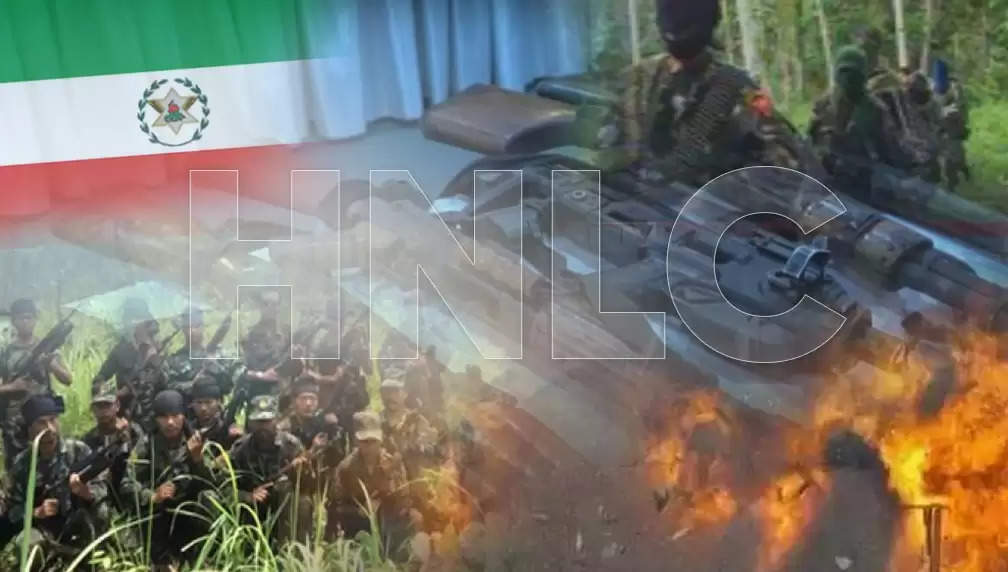The then, now and the unknown tomorrow: A brief history of HNLC in Meghalaya

By A.H. Sarah
The history of Hynñiewtrep National Liberation Council (HNLC) can be traced to the mother insurgency of the 1980s, when Hynñiewtrep Achik Liberation Council (HALC), an ethno-supremacist militant outfit, sought to erase the presence of all outsiders, or “dkhars” as used in native terminology.
The purpose of the movement had separatist tendencies at the inception — the creation of a separate homeland, or at least self-governaning territory for Khasis, Jaiñtias, and Garos.
Despite its dream of sectarian utopia, the group saw cracks due to its own ethnic differences, which then led to the breaking up of the parent body (HALC) into two groups – the HNLC in 1992–1993 representing the Khasis and Jaintias, and the Achik Matgrik Liberation Army (AMLA) representing the Garos.
At the time of formation of HNLC, four men were the founding leaders -Chairman Julius Dorphang, Commander-in-chief Bobby Marwein, General Secretary Cherish S. Thangkhiew, and Public Secretary M. Diengdoh.
The HNLC took to fight for what it considered a dominion under rich “outsider” elites, with Meghalaya having little opportunity to offer to its citizens being in the infancy of its 1972 statehood. These passions of “blood and soil,” wrapped in the rhetoric of war against unequal distribution of wealth, have since been a feature of Meghalaya’s politics, whether proscribed or polite.
Unlike the Naga and Kashmiri rebellions, however, the fight for self-determination in Meghalaya waned, as the centre quelled separatism and militancy with its brute power and HNLC lost mass appeal.
Many of those in the original HNLC were then trained under the Isak-Muivah faction of the separatist National Socialist Council of Nagaland (NSCN-IM) and were also former members of the Khasi Students Union (KSU).
For survival and financing, HNLC ran a few businesses and created hideouts in Bangladesh with the help of corrupt border officials within the Bangladesh Army. Ironically, this was done despite their ire against non-tribals and bouts of ethnic cleansing campaigns between 1979 and 1992 — especially against Bengalis, Nepalis, and Biharis.
At the height of their trans-border activities for survival, HNLC also sought help from the Chinese-descent Wa tribe of Burma, which aided them in procuring weapons.
Eventually, despite the body being suppressed from time-to-time due to insurgent activities, HNLC started to become feared, with infamous activities spreading well into the 2000s.
For example, in August 2000, they infamously bombarded Central Reserve Police Force (CRPF) camps with lethal gunfire, forcing the state to impose an immediate curfew. A year later, another five civilians were killed by suspected HNLC cadres in Dhankheti. In some of its more popular social campaigns, cadres were known to pierce padlocks into the ear lobes of rapists.
By November 16, 2000, however, the HNLC was banned. According to the Ministry of Home Affairs, between 2003 and 2004 alone, militancy in the state had taken the lives of 52 innocent civilians, besides hundreds of incidents of kidnapping, extortion, arms smuggling, and clashes with armed forces and the state police.
Soon after the ban, despite their presence in the borderlands of Bangladesh, the years that followed brought relative peace to the state. In 2016, a record number of "extremists" surrendered, and by 2019, only one civilian was killed in such attacks and very few incidents of extortion and kidnapping were recorded.
With Meghalaya inching towards normalcy due to the ban on the group and a tight governmental control on other militant activities, HNLC’s ban was revoked.
But this was short-lived as the ban was re-imposed in 2019 due to an uptick in the group’s activities.
To look at the history of HNLC, the first time the group took a major hit was when Dorphang surrendered in July 2007, becoming disillusioned by the militancy’s wayward trajectory, guided by the strict control of defence forces and police.
He later became a legislator after contesting in the state’s Legislative Assembly elections in 2013. However soon after, he was embroiled in the rape of a minor and convicted under Protection of Children from Sexual Offences (POCSO) Act, 2011.
However, HNLC’s leadership took a major blow after its long standing leader Cherish Thangkhiew followed Dorphang in laying down arms and surrendering in 2018.
Thangkhiew is now the subject of intense protests in the city after his supposed encounter by the Meghalaya Police on August 13, 2021.
As of now, all peace is fragile. Rumours are growing that state's proscribed outfits intend to regroup, or may already be regrouping. HNLC has in fact claimed responsibility for a lot of misdoings that have happened in the state in the recent past.
The recent Khliehriat and Laitumkhrah bombings by HNLC, and the police's lethal raid of Cherish Thangkhiew's residence in response, have allowed a sense of uneasiness to creep into the people's minds.
The ultimate chapter in the book of HNLC is unknown. However, the current chapter seems like the opening up of the sleeping wounds of a very violent yesterday in Meghalaya’s history.
ALSO WATCH:
TNT-The Northeast Today is now on WhatsApp: CLICK HERE to receive more updates on your phone.

















